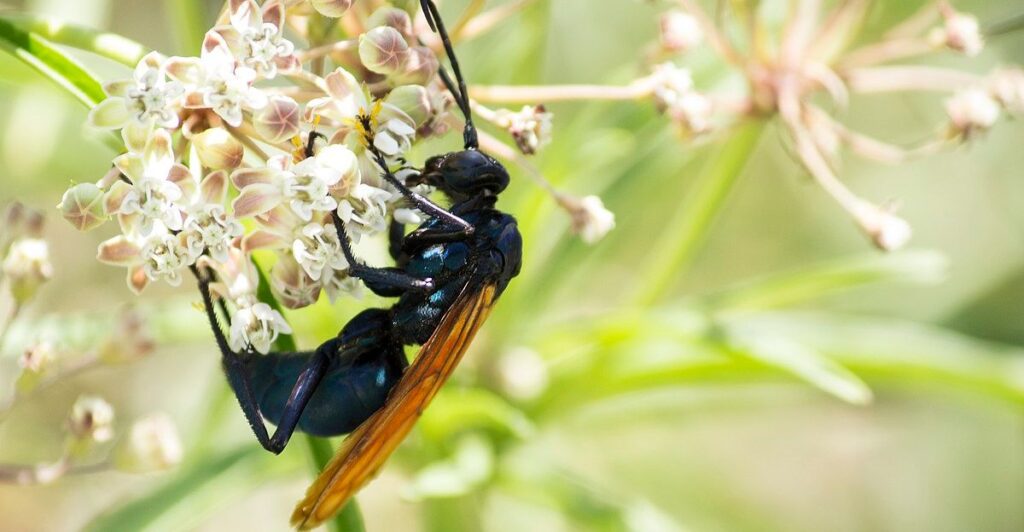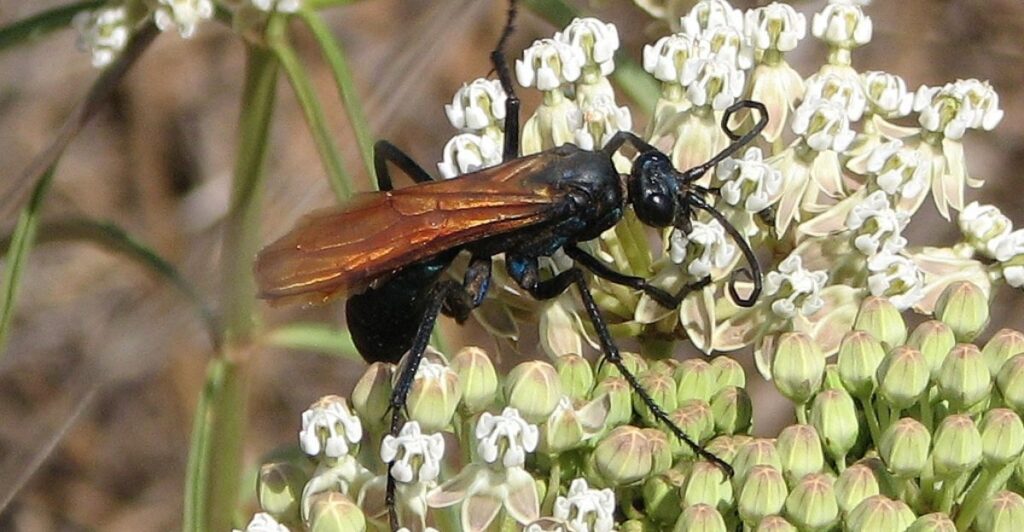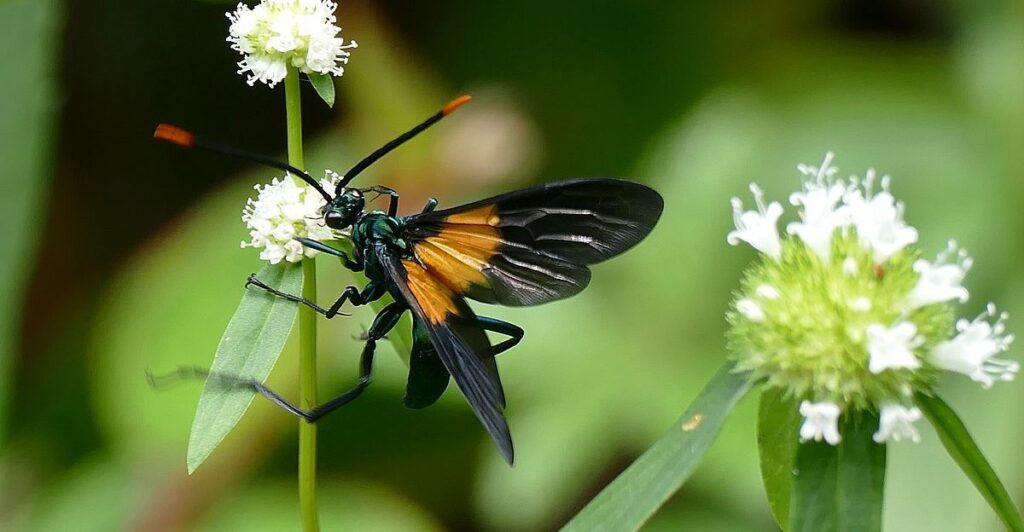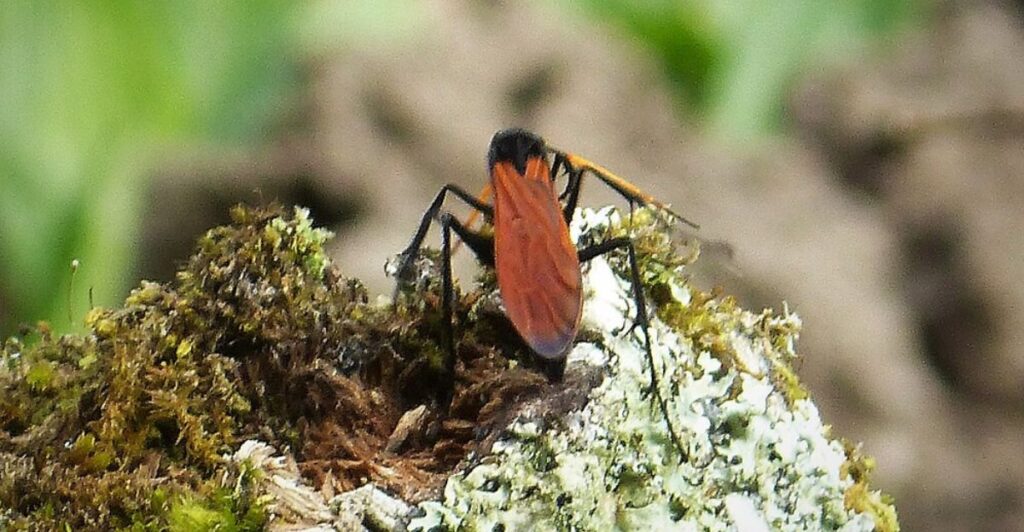
Tarantula hawks are nature’s blend of beauty and danger. With their fiery orange wings and sting ranked among the most painful on Earth, these wasps are fearless hunters. Yet, there’s more to them than their fierce reputation. So, here are 12 eye-opening facts about tarantula hawks, uncovering their deadly hunting tactics and unexpected ecological roles.
1. A Sting Built for Perfection

The tarantula hawk’s sting injects venom that blocks a tarantula’s (the spider’s) nervous system, paralyzing it completely. This isn’t just random evolution—it’s a calculated adaptation. The venom ensures the spider remains alive and fresh for the wasp larva, a chilling yet efficient survival strategy.
2. The Art of Spider Tracking

Tarantula hawks don’t stumble upon their prey. Female wasps use keen senses, detecting vibrations in the ground to locate burrows. Once they’ve identified a tarantula’s lair, they’ll lure the spider out by mimicking prey movements. This precision hunting showcases the wasp’s intelligence and specialized instincts.
3. Living Among Giants

Size matters in the insect world, and tarantula hawks are huge. With wingspans stretching up to 4.5 inches, they tower over many other insects. Their larger bodies allow them to overpower tarantula spiders and transport them to nesting sites with ease.
4. A Larva’s Creepy Dining Habit

The lifecycle of a tarantula hawk begins in a way that might sound like a horror movie plot. After paralyzing a tarantula spider, the female wasp lays an egg on the spider’s abdomen and buries it. When the larva hatches, it begins feeding—methodically avoiding vital organs to keep the spider alive.
5. Nectar Over Prey

Despite their reputation as spider hunters, adult tarantula hawks prefer a vegetarian diet. They rely on nectar for sustenance, favoring flowers like milkweed and mesquite blossoms. Plus, their role as pollinators is vital in maintaining ecosystems, making them surprising contributors to biodiversity.
6. Wasp Armor in Color

Those orange wings and blue-black bodies act as a defense mechanism. The striking coloration serves as a warning to potential predators. This aposematic feature tells birds and mammals that attacking this insect could lead to an unpleasant encounter with its sting.
7. A Lifecycle Linked to Timing

Tarantula hawks synchronize their reproductive cycles with spider activity. Female wasps only lay eggs when tarantula spider populations peak. This ensures abundant hosts for their larvae. It’s a survival tactic honed by evolution, which demonstrates how their existence is intricately tied to their prey.
8. Males Aren’t Hunters

Interestingly, male tarantula hawks play no part in hunting tarantulas. Their primary focus is reproduction. Males are often seen as hill-topping, a behavior where they stake out high perches to compete for mates. This division of labor allows females to specialize in the more dangerous task of hunting.
9. Role in Ecosystem Control

By targeting tarantulas, these wasps indirectly control spider populations. It helps balance the local ecosystems, as unchecked tarantula numbers could disrupt food chains. It’s an unintentional but important service provided by tarantula hawks.
10. Non-Aggressive Yet Feared

Despite their fearsome appearance and painful sting, tarantula hawks are remarkably non-aggressive. They don’t defend nests like other wasps and avoid conflict unless provoked. This docile nature makes them less threatening to humans than their reputation suggests.
11. Legends in Pain Rankings

Tarantula hawks are infamous for their ranking on the Schmidt Pain Index, a scale measuring the world’s most painful insect stings. Their sting ranks just below the bullet ants, making them legends in the entomological world. It’s a reminder of the power packed into these formidable hunters.
12. Immune to Spider Venom

Tarantula wasps have venom strong enough to immobilize or kill other creatures, but it doesn’t affect them. This gives them an evolutionary advantage, which allows them to subdue spiders much larger and more dangerous than themselves without the risk of being attacked in return.
Stay connected with us for more stories like this! Follow us to get the latest updates or hit the Follow button at the top of this article, and let us know what you think by leaving your feedback below. We’d love to hear from you!







